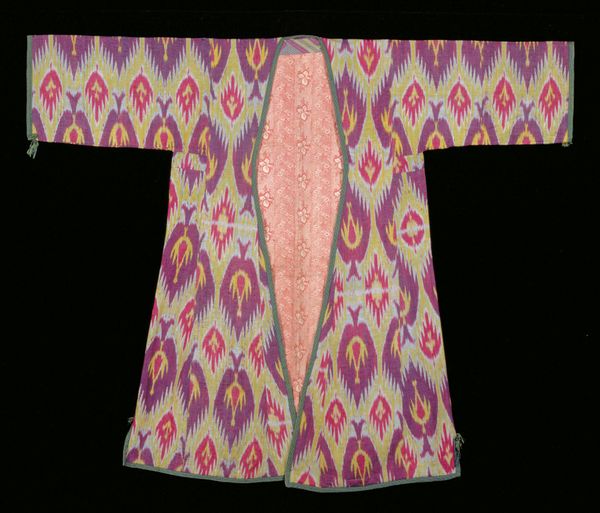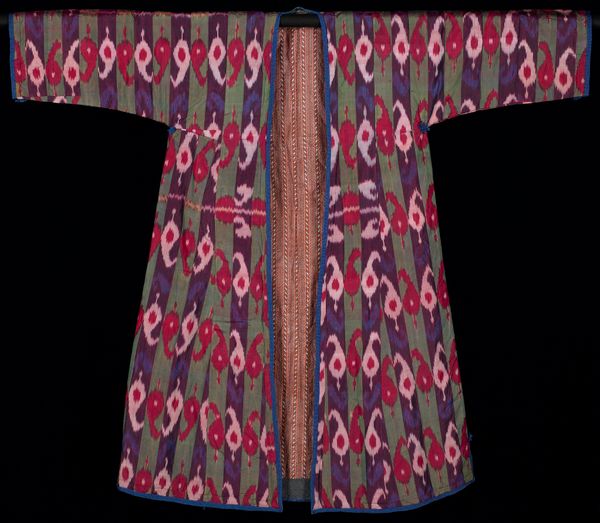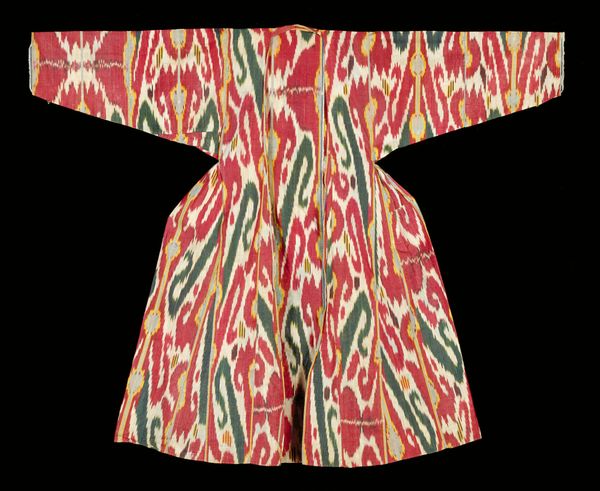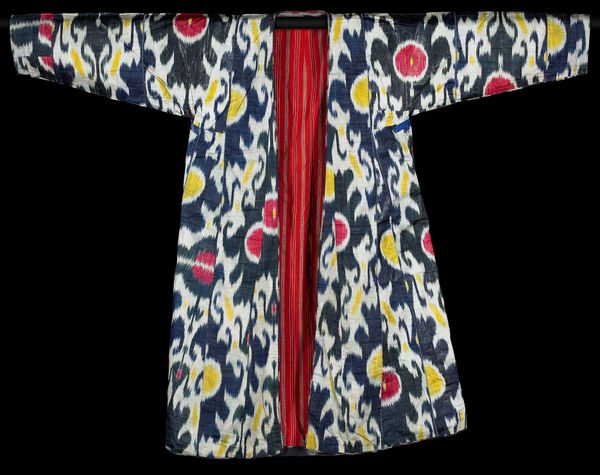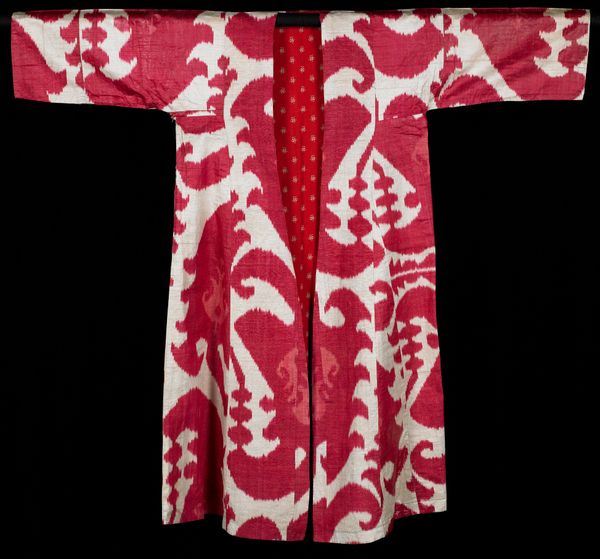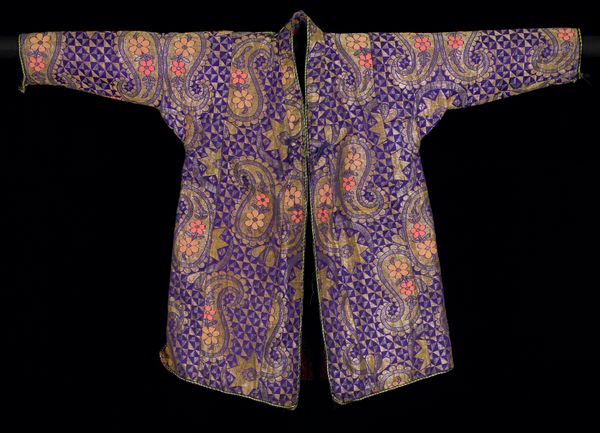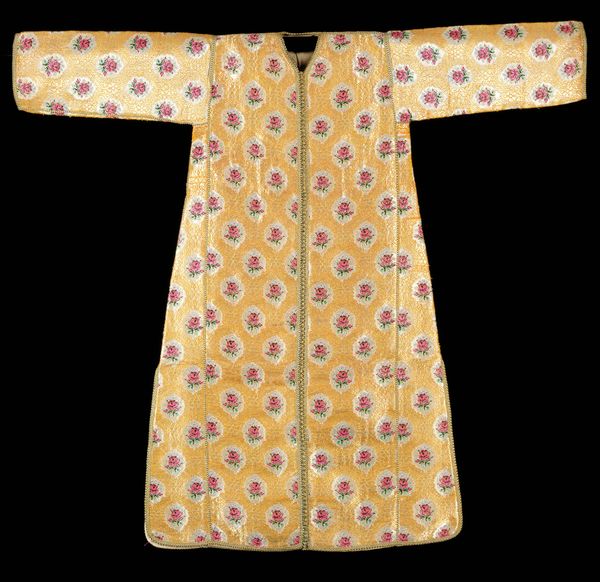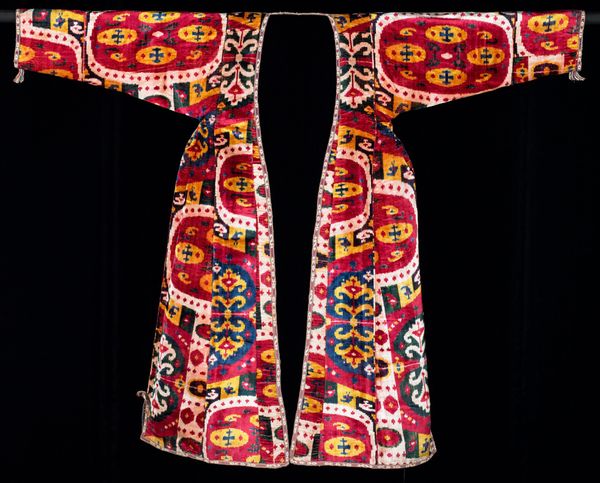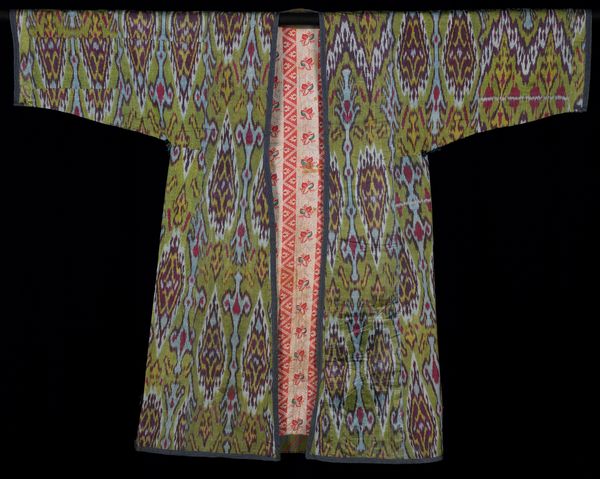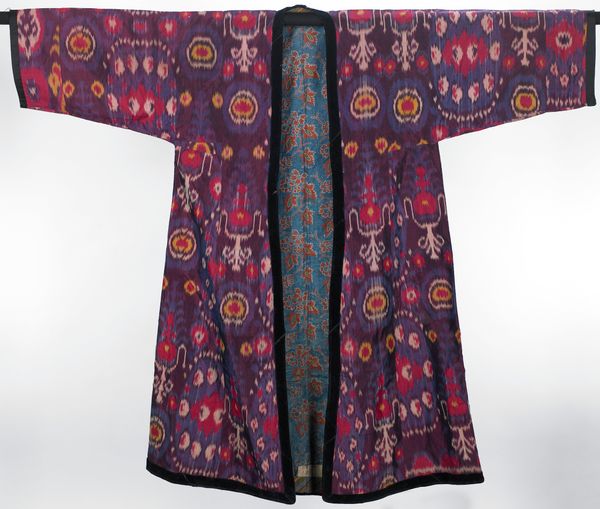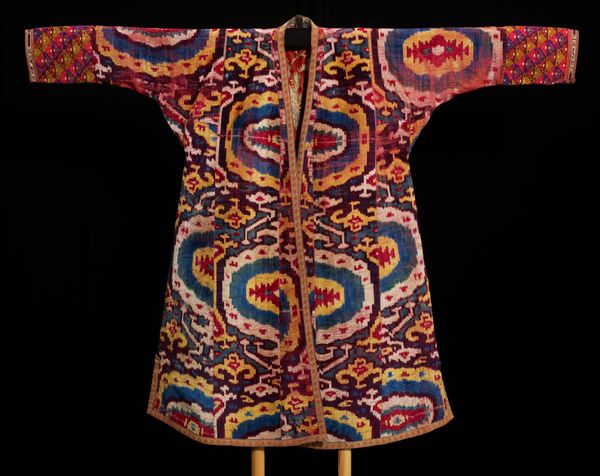
silk, weaving, textile, cotton
#
pattern heavy
#
silk
#
pattern
#
weaving
#
textile
#
fashion and textile design
#
geometric pattern
#
geometric
#
fabric design
#
repetition of pattern
#
pattern repetition
#
cotton
#
textile design
#
imprinted textile
#
layered pattern
#
combined pattern
Dimensions: 52 3/4 x 56 1/4 in. (133.99 x 142.88 cm)
Copyright: Public Domain
Curator: Looking at this *Chapan* here, I am immediately drawn to the interplay between order and chaos within the complex geometric patterns. There is an echoing motif within the field of weaving. Editor: Well, first, what catches my eye is the striking contrast between the vibrant exterior and that quieter, more intimate interior lining. The overall impression is almost celebratory, but also incredibly tactile, I just want to reach out and feel the layers. Where does this textile come from? Curator: It's a textile piece made from silk and cotton, exact date unknown. The curators believe it is from Central Asia. Notice the geometric and combined pattern? Editor: Knowing it comes from Central Asia adds so much. You see textiles playing a crucial role historically. This Chapan embodies an intersection of cultural identity, trade routes, and possibly even resistance. The bright exterior may well have had great symbolic weight in specific social and political contexts, right? Curator: Absolutely, you are hitting on the fact that each element holds layered meaning, that the geometric motifs within can speak to tradition and social roles, as well as something deeper, and that cultural memory is bound tightly to it. The *Chapan's* textile and method of construction—the weaving—further echo craft traditions in textile production, continuing cultural lineage. Editor: The pattern looks like fire or feathers, maybe even teardrops falling on each other to become abstract figures, do you think there are deliberate coded symbols for power, gender, status that it’s impossible to know now without very deep investigation of its original role and audience? What kinds of occasions was the chapan worn in, or was it functional and everyday? Curator: Well, to my eyes, the repetition creates a field for contemplation. Perhaps the layering can communicate social strata, where complexity indicates authority, or family history, but it’s all speculation for a lost history that is always provisional. It also highlights how culture informs psychology; after long exposure to the same visual symbols, what common feelings would the original community have had from seeing the chapan worn by someone else? Editor: Indeed. The question of how the wearer might experience it personally—their relationship to it, the personal meaning derived from the weight, feel, or memory attached—remains crucial to unpack if one’s trying to truly see this artwork’s richness. Thank you for this experience, this object inspires multiple routes of understanding. Curator: And thank you, it is enriching to share and remember the layered power objects like these still communicate.
Comments
No comments
Be the first to comment and join the conversation on the ultimate creative platform.
